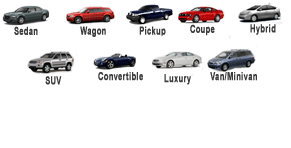![]()


![]()


|
||||||||||||||||||||||||||||||||
|
No class of vehicles has changed more in the past 15 years than SUVs. Up to 1990, they were utility vehicles, made from a thinly-disguised pickup chassis with a full-length body, more suited to carrying people than cargo. Utility vehicles were a niche market, used by people who needed rugged, often 4-wheel drive, transportation in areas where roads were merely a suggestion. Comfort and amenities were secondary to the ability to merely get through.
Fast-forward to today, and it's "sport-utility'' and more likely to be bought by a suburban soccer mom than an oil wildcatter. SUVs started to get fashionable in the early 1990s, with the Ford Explorer paving the way by being far more comfortable and civilized than anything before it. Offering more space than the last of the full-sized wagons by virtue of a higher stance, and with a rugged, outdoorsy look that said "I can go anywhere'' even though most never saw rougher duty than a stadium parking lot tailgate party, SUVs quickly dispatched wagons and then took on minivans as the family hauler of choice. Compared to a minivan, an SUV has better towing and cargo-hauling abilities. SUVs come in small, medium, and large size, and vary from inexpensive and basic in specification to being as expensive and fully-equipped as any premium luxury sedan. Originally of body-on-frame construction and closely-related to pickups, an increasing number offer fully-independent suspension and unibody or semi-unibody construction. The Ford Explorer maintains its popularity, but there are plenty of other choices, from the small and inexpensive like the Kia Sportage, Toyota RAV4, and Honda CR-V through the large and expensive Range Rover line. |
||||||||||||||||||||||||||||||||
|
|
||||||||||||||||||||||||||||||||
Send your questions, comments and suggestions to: Editor-in-Chief@theautochannel.com
To report errors and other problems with this page, please use this form